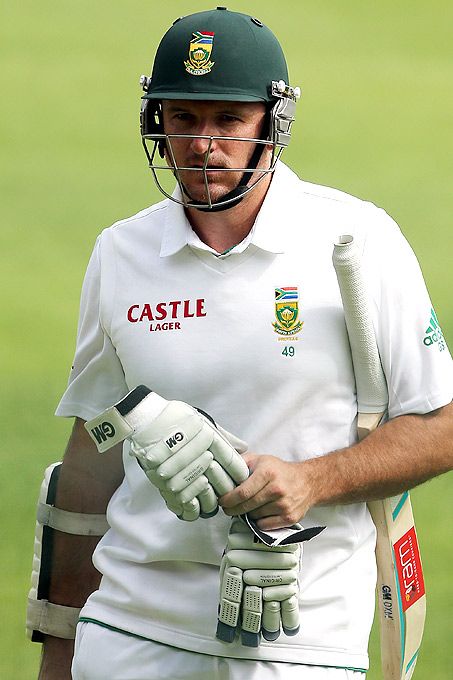Shakya Mitra ponders why top batsmen like Michael Clarke are bowing out early.
Is it because bowling is of a much higher standard? Find out…

Michael Clarke’s announcement of retirement from international cricket after the fifth Test of the Ashes Series was surprising, not so much on issues of his form but more because of his age.
In a game where the best in the world tend to go on till 37-38 and even into their 40s, the decision of a class batsman like Clarke to bow out at 34 was surprising.
Admittedly, Clarke suffers from a bad back, which perhaps suggested that his career was anyway going to be shorter than what is perceived to be normal for a top cricketer today. But as reports from the Australian media seem to suggest, Clarke wasn’t going to be picked for the team after the Ashes.
This begs the question: how much of his retirement is to do with age and injury and how much with batsmen declining due to a better standard of bowlers? The question is in itself surprising. In an era where cricket is said to be dominated by batsmen, how would bowlers force a top-notch batsman to take the door?
Clarke has an excellent record in Test cricket, having made 8628 runs, 28 centuries and an average of close to 50. Yet, there is an asterisk next to his name because of how he has coped with the world’s best bowlers. He has been dismissed 11 times in 21 Tests by England’s Stuart Broad, including five times in the 2013 Ashes series, and nine times in 14 Tests by South Africa’s Dale Steyn.
For all his 'greatness', Clarke may unfortunately be remembered for coming out second best in the big encounters against England and South Africa, where his chief tormentors have been Broad and Steyn, respectively.

In the 2013-14 season, Graeme Smith and Jonathan Trott both walked away from the game at the age of 32. (Trott came back a year and a half later and played a few Tests against West Indies before officially retiring.)
The reasons were different. Smith had captained South Africa for over a decade besides being troubled by a knee problem, while Trott left the tour of Australia with an apparent stress illness. A factor common to both batsmen was that they had come off second-best while facing Australia’s Mitchell Johnson who was at the peak of his career at that time.
Trott left the tour of Australia after the first Test where Johnson dismissed him cheaply in both innings, amongst the five times he had dismissed him in six Tests. Smith, too, retired after the 2013-14 Test series against Australia, where Johnson dismissed him four times in three Tests. Johnson took Smith’s wicket nine times in 11 Tests and was also responsible for breaking his hand twice in the 2008-09 season.
There are many more examples, but it only points to the fact that it isn’t uncommon to see top batsmen walking away from the game at a relatively early age. While every cricketer has his own reason to retire, armed against some of the world’s best fast bowlers, not all the top batsmen have come out with their reputations intact.
It would be presumptuous to say that batsmen’s careers have been shortened because of the quality of fast bowling, but there is statistical evidence to suggest that certain top batsmen have struggled against top fast bowlers, particularly in the twilight of their careers.

Despite the game becoming batsmen-oriented, the bowling of this generation is good. Steyn is one of the greatest fast bowlers of all time. The fact that he has taken a bagful of wickets in the batting-friendly conditions in Asia is a justification of his exceptional record, which has seen him reach 400 wickets in 3,600 deliveries — faster than anyone else. While Steyn is arguably the greatest of this generation, the others aren’t too bad either.
James Anderson is England’s greatest wicket-taker with more than 400 wickets in his kitty, while Johnson and Broad both have 300 plus wickets each.
In such circumstances, where it would be undeniably difficult to face one fast bowler, the batsmen of this era often have to contend with two from different ends. South Africa has Steyn and Morne Morkel, England has Broad and Anderson, while Australia has Johnson and till recently Ryan Harris who excelled in his brief career.
The question is this: in a game where the greats like Sachin Tendulkar, Ricky Ponting, Rahul Dravid and Jacques Kallis have gone on till fairly late, despite the dips they have had at some stages, is there cause for concern that top players such as Clarke or Smith are retiring from the game at a much younger age? And is it possible that this is because top bowlers have learnt the art of being fierce even when the dice is loaded against them?












 © 2025
© 2025